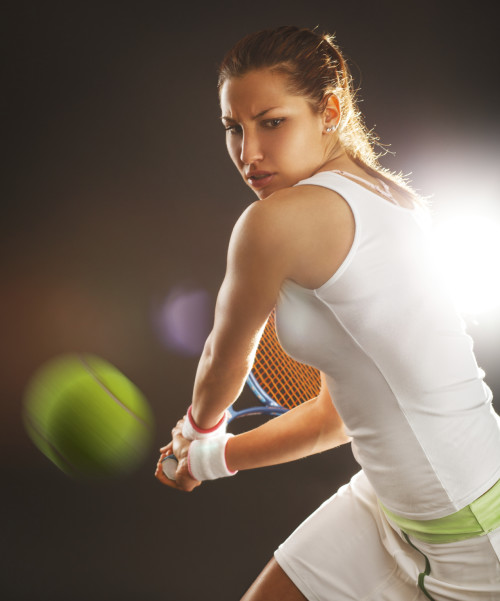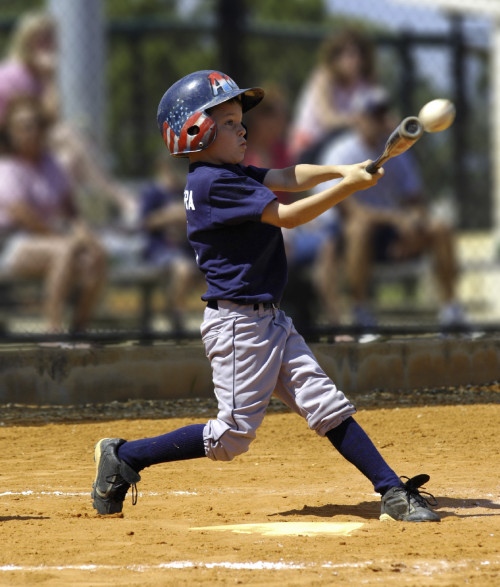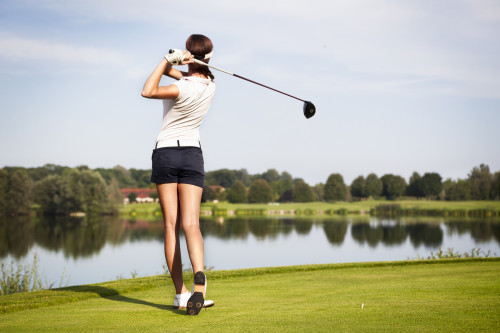Sports Vision Training
What is Sports Vision Training?
Sports vision training works on improving the visual abilities of an athlete that are most necessary for excellence in their sport. Some of these abilities include eye-hand coordination, dynamic visual acuity, tracking, focusing, visual reaction time, and peripheral vision. All activities are sport-specific with a custom tailored program for each sport and athlete.
Therefore, a program for a tennis player will emphasize eye-hand coordination and dynamic visual acuity whereas a program for a golfer will concentrate on visual alignment and depth perception to see the breaks in the greens.
Many athletes are amazed at how we can predict their performance based on our findings from a visual screening. If you are having trouble getting to the next level in your particular sport even after stepping up your practice, you might have a visual problem limiting your success.


What is Sports Vision Training?
Sports vision training works on improving the visual abilities of an athlete that are most necessary for excellence in their sport. Some of these abilities include eye-hand coordination, dynamic visual acuity, tracking, focusing, visual reaction time, and peripheral vision. All activities are sport-specific with a custom tailored program for each sport and athlete.
Therefore, a program for a tennis player will emphasize eye-hand coordination and dynamic visual acuity whereas a program for a golfer will concentrate on visual alignment and depth perception to see the breaks in the greens.
Many athletes are amazed at how we can predict their performance based on our findings from a visual screening. If you are having trouble getting to the next level in your particular sport even after stepping up your practice, you might have a visual problem limiting your success.

Peak Visual Skills Lead to Peak Performance
The visual skills necessary for peak athletic performance in many sports are:
- Dynamic Visual Acuity – the ability to see objects clearly that are in motion.
- Eye Tracking – the ability to “keep your eye on the ball.”
- Focusing – the ability to change focus from one object to another quickly and clearly.
- Peripheral Awareness – being able to see things out of the corner of your eye.
- Depth Perception – the ability to quickly and accurately judge the distance and speed of objects.
- Eye-Hand or Eye-Body Coordination – the ability to use our eyes to direct the movements of our hands/body.
- Reaction Time – how quickly a person perceives an anticipated visual event and how quickly they can react to that stimulus.
- Balance – the ability to stay upright or stay in control of body movement. Vision and balance are directly related.
- Contrast Sensitivity – the ability of the visual system to distinguish between an object and its background.
Why Do Sports Vision Screenings?
Research shows that over 80% of what we learn comes from the visual system. That percentage goes up even more when one is talking about sports because the eyes direct the dynamic movement of the body. Statistics taken from sports vision screenings at the Olympic and Junior Olympic level show that those athletes that brought home medals were those that had the best visual systems.
Other statistics include:
- 30% had less than 20/20 vision
- 25% had decreased depth perception
- 26% had poor eye-hand coordination for the demands of their sport
- 12% had inaccurate eye movement abilities (tracking and keeping eyes on the ball)


Why Do Sports Vision Screenings?
Research shows that over 80% of what we learn comes from the visual system. That percentage goes up even more when one is talking about sports because the eyes direct the dynamic movement of the body. Statistics taken from sports vision screenings at the Olympic and Junior Olympic level show that those athletes that brought home medals were those that had the best visual systems.
Other statistics include:
- 30% had less than 20/20 vision
- 25% had decreased depth perception
- 26% had poor eye-hand coordination for the demands of their sport
- 12% had inaccurate eye movement abilities (tracking and keeping eyes on the ball)

What Sports Vision Training Can Do
Having visual difficulties in any of the areas discussed above will translate into difficulties on the field. However, all of these areas can be improved upon through the course of a sports vision training/enhancement program. Coaches often are amazed at how we can predict an athlete’s performance just by looking at their results. Athletes that step up their practice and training regimen but don’t achieve performance gains on the field may have a functional vision problem that is hindering their performance.
